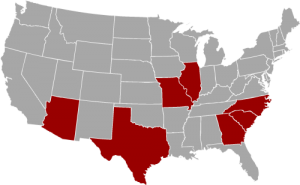The commercial trucking industry is the lifeblood of our economy, responsible for the transportation of goods that keep our nation moving. However, with great power comes great responsibility. Commercial trucks are massive vehicles that can pose significant risks to both their drivers and others on the road. To ensure safety, there are strict regulations in place that govern the commercial trucking industry. In this blog, we will delve into these regulations, highlighting their importance and the key aspects you need to know.
Why Trucking Safety Regulations Matter
Commercial trucking safety regulations are in place for a reason – to protect the lives of those on the road and to ensure the safe and efficient operation of the trucking industry. Here’s why they matter:
- Safety: The primary concern is to prevent accidents and injuries. Commercial trucks are much larger and heavier than passenger vehicles, and accidents involving them are more likely to result in severe injuries or fatalities.
- Environmental Impact: Commercial trucks can be significant contributors to air pollution. Regulations often include guidelines on emissions and fuel efficiency to reduce their environmental impact.
- Economic Impact: Accidents involving commercial trucks can result in costly legal battles, insurance claims, and property damage. Adhering to safety regulations helps minimize these costs.
- Efficiency: Regulations help ensure that commercial trucking operations are run efficiently, which is crucial for the timely delivery of goods and the smooth functioning of the supply chain.
Key Regulations You Need to Know
Now, let’s explore some of the key regulations that govern the commercial trucking industry.
- Hours of Service (HOS): The HOS regulations are designed to prevent driver fatigue. They limit the number of hours a truck driver can operate a commercial vehicle within a specific timeframe. Rest breaks and off-duty time are mandatory to ensure that drivers are well-rested and alert.
- Commercial Driver’s License (CDL): To drive a commercial truck, a special license is required. CDL requirements include passing a written test, a skills test, and a medical examination.
- Weight Limits: Trucks are subject to weight limits to prevent overloading, which can lead to accidents and road damage. These limits vary by axle and type of road.
- Safety Inspections: Regular inspections of trucks are mandatory to ensure they are in good working condition. This includes checking brakes, tires, lights, and other safety-related equipment.
- Hazardous Materials Transport: Trucks carrying hazardous materials are subject to specific regulations to ensure the safe handling, storage, and transportation of these substances.
- Drug and Alcohol Testing: Commercial truck drivers are required to undergo regular drug and alcohol testing to ensure they are not impaired while operating their vehicles.
- Electronic Logging Devices (ELDs): ELDs are used to record a driver’s hours of service electronically. This technology helps prevent falsification of logbooks and ensures compliance with HOS regulations.
- Insurance Requirements: Trucking companies must carry a minimum amount of insurance to cover potential liabilities in case of accidents.
- Compliance and Enforcement
It’s essential for trucking companies, drivers, and regulators to work together to ensure compliance with safety regulations. Enforcement mechanisms include roadside inspections, compliance reviews, and fines for violations. Failure to comply with these regulations can result in penalties, legal consequences, and even the suspension of a trucking company’s operations.
Conclusion
Commercial trucking safety regulations are a critical component of keeping our roads safe and our economy moving. They are in place to prevent accidents, protect the environment, and ensure the efficient operation of the trucking industry. Whether you’re a truck driver, a fleet manager, or a concerned citizen, understanding and following these regulations is essential for the safety and well-being of everyone on the road. By adhering to these rules and continuously striving for higher safety standards, the commercial trucking industry can continue to be a vital part of our economy while minimizing its risks and impacts.


